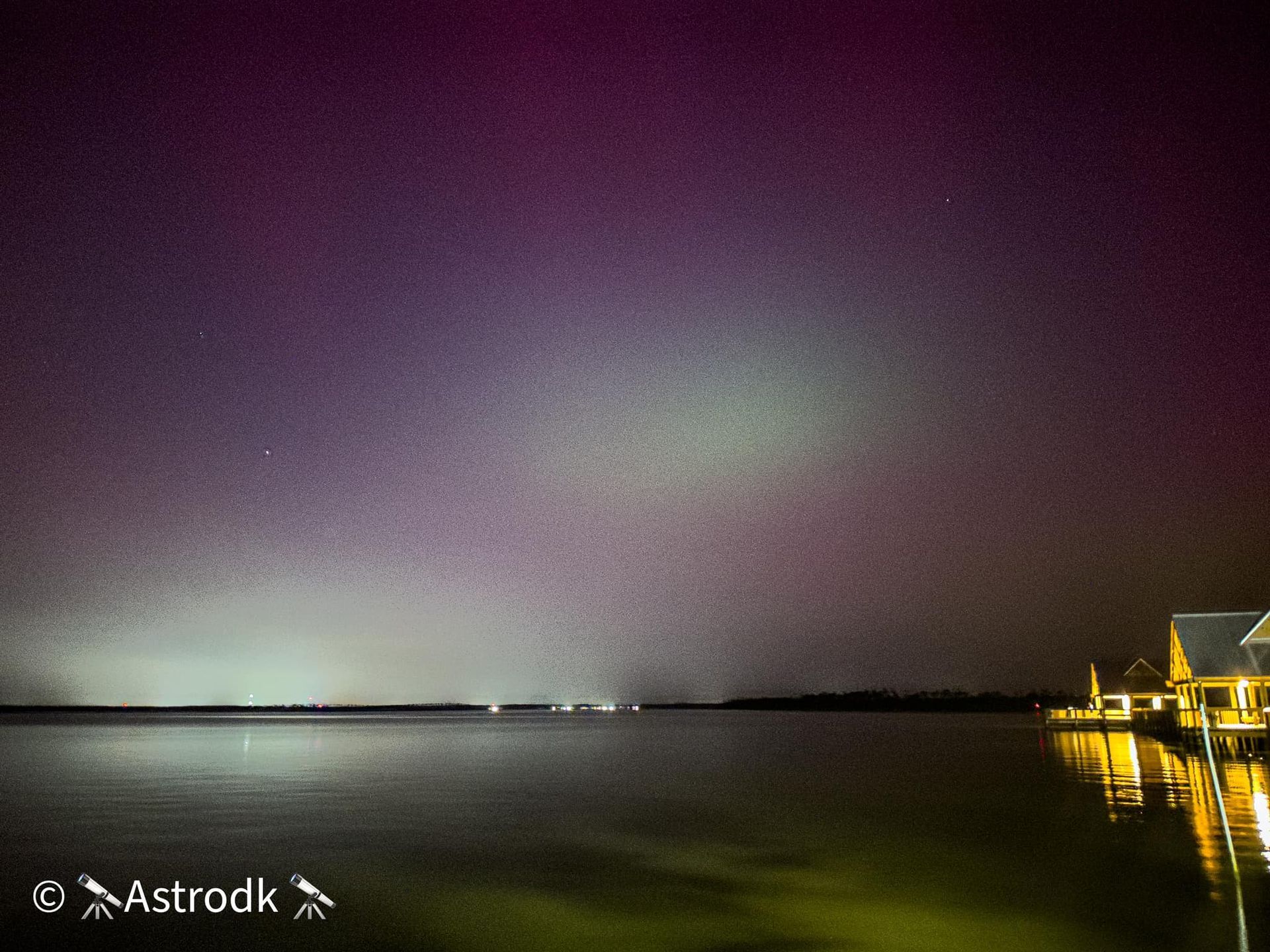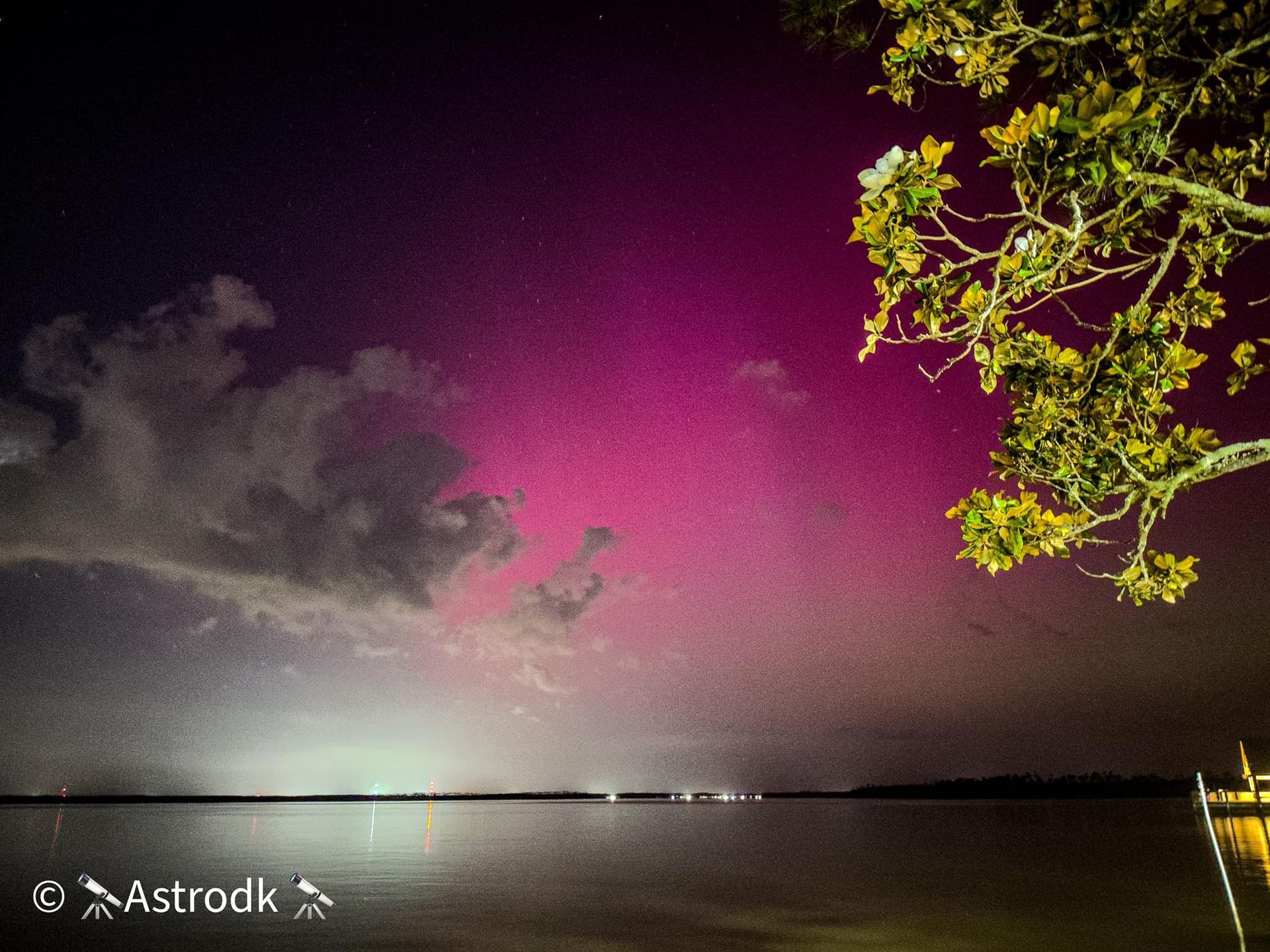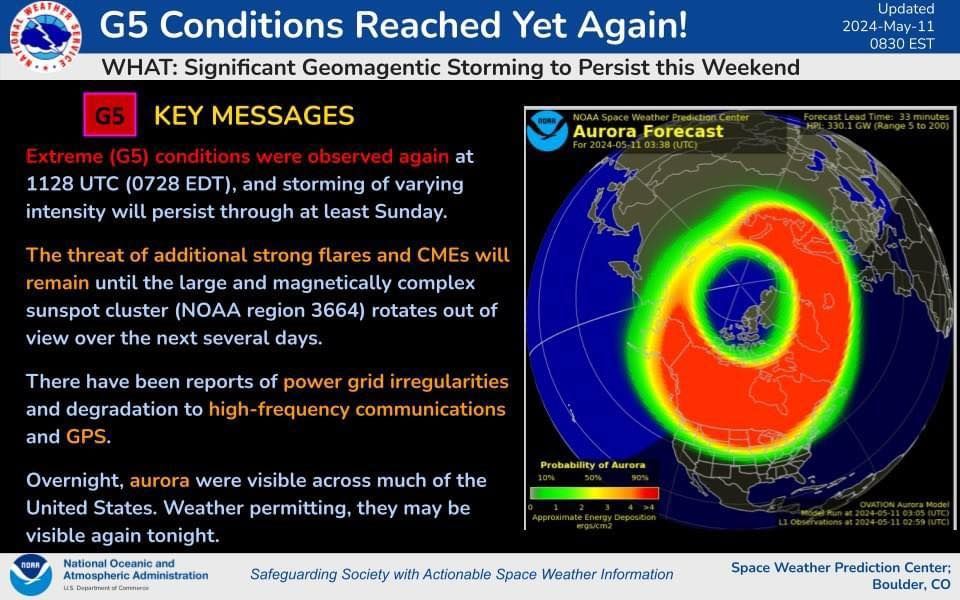Rare G5 Solar Storm Brings Aurora Borealis to Orange Beach
Solar Flare Eruption Sparks Brilliant Aurora Borealis Sightings

Orange Beach, Ala. – (OBA) – An extreme geomagnetic storm, classified as a G5 (the highest level), struck Earth last night. This powerful solar event triggered dazzling displays of the aurora borealis, or northern lights, across many parts of the southern United States and around the world.
According to the National Oceanic and Atmospheric Administration (NOAA), this was the strongest geomagnetic storm to hit Earth since October 2003. The storm was caused by a series of solar flares and coronal mass ejections (bursts of plasma and magnetic field lines) from the sun's corona.
Remarkably, the aurora borealis was visible as far south as Orange Beach and Gulf Shores. This rare occurrence was due to the intensity of the geomagnetic storm, which temporarily disturbed Earth's magnetosphere (the region dominated by its magnetic field).
Dave John Kriegler, Instructor at University of Nebraska at Omaha, said… “Predictions are very iffy. This storm struck 12 hours earlier than predicted. There are several more storms heading our way so aurora tonight MAY return if skies are clear tonight.”
Dave added, “Use a camera or phone to look north. The pics or view through phone are much more sensitive to the red than your eyes. You can see it better through those devices. The green glow of aurora is from high-energy particles exciting Oxygen molecules 50–170 miles high. Your eye sees this best. Red is Oxygen excited higher up 170 to 300 miles. Low altitude blue or purple is from Nitrogen.”
NOAA has observed a sunspot cluster 17 times the diameter of Earth, which is approximately 7,926 miles. This massive sunspot cluster is responsible for the recent solar flares and coronal mass ejections.
Geomagnetic storms can potentially disrupt telecommunications and power grids. NOAA warns that unsettled geomagnetic conditions could persist through the weekend, so further aurora displays may be possible tonight.
On average, only four G5 geomagnetic storms occur during each 11-year solar cycle. The current solar cycle began in December 2019, making this event particularly noteworthy.


Share this article w/ Friends...











